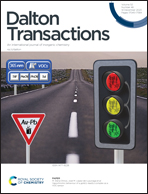Diammonium spacer-induced stable zigzag type 2D Dion–Jacobson lead/tin-based perovskite solar cells†
Abstract
Hybrid halide two dimensional (2D) perovskites have attracted considerable attention because they exhibit an improvement in perovskite solar cells compared with their 3D analogs. However, their bulky organic space group, leading to higher bandgaps and exciton binding energy, limits the charge transport in solar cells. Herein, the 3-(aminomethyl)pyridinium (3API2, C6H10N2I2) dication is incorporated into FA(Pb0.5Sn0.5)I3 to develop zigzag type 2D Dion–Jacobson-phase perovskites, which have low band gaps in the range of 1.44 to 1.53 eV for concentrations from 5 mol% to 20 mol% due to structural distortion. The introduction of the 3API2 cation increases the carrier conductivity and produces a high-quality perovskite film with no pinhole and connected grains, which is favorable for efficient carrier transport. Consequently, solar cells employing FA(Pb0.5Sn0.5)I3 with 10 mol% 3API2 added as a light absorber achieve a power conversion efficiency of 5.46% with an open-circuit voltage of 0.47 V, a fill factor of 58.07% and a short-circuit current density of 20.18 mA cm−2. With this class of new 2D Dion–Jacobson perovskite compositions, this work suggests potential future directions for improving the performance and device stability of perovskite solar cells.



 Please wait while we load your content...
Please wait while we load your content...